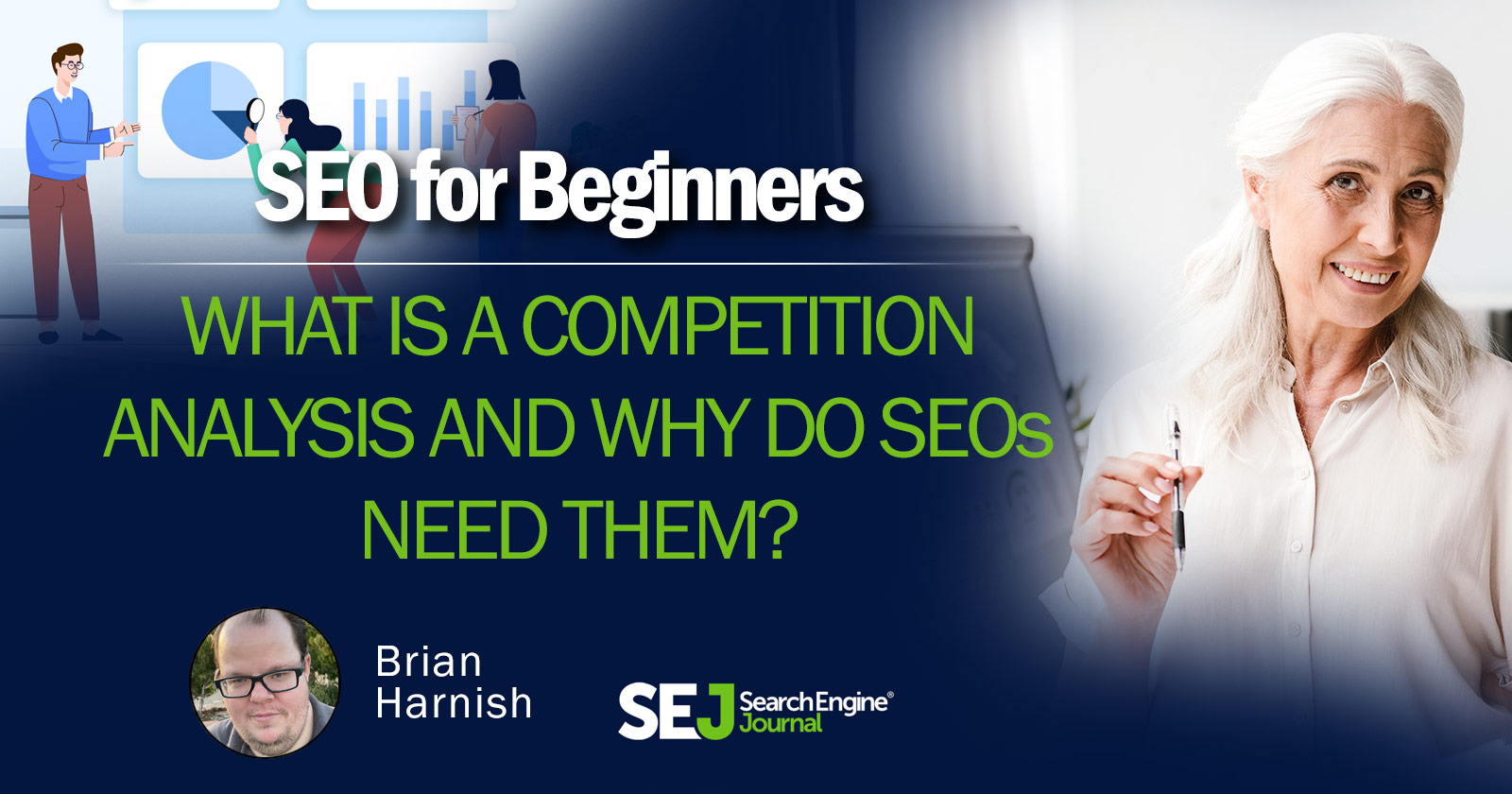In SEO, a competitor analysis is one of the most important steps you must take before setting your SEO strategy.
This analysis looks deeper into your competition’s links, keywords, content, and on-site SEO to find out what makes it tick.
By performing a competitor analysis, you know where you are, and what you must do to move forward.
If you don’t do a competition analysis as part of your initial SEO discovery process, your SEO strategy will likely not yield the returns you are expecting.
You are flying blind and trying to hit a blank target with an arrow.
Your competition analysis will tell you the following things:
- The techniques that really work in your industry.
- Which keywords your competition is going after.
- What your competition is doing for links.
- What your competition is doing for content.
- What they are doing for on-page SEO.
- The weaknesses in your competition’s SEO strategy.
- How you should implement SEO tasks moving forward.
- What you must do to beat those competitors.
To perform an effective competitor analysis, you should analyze the three areas that matter most to moving the needle: technical SEO, content, and links.
Let’s examine the elements of a successful competition analysis in more detail, and how you can take this and apply it no matter which industry you are in.
You Must Assess What Really Works in the Industry
In order to beat the competition you are up against, you must assess things that are really working in your industry.
What does this really mean?
Your competition, in order to achieve the top spot on Google, is going to implement a robust SEO strategy to take the top spot. They will have links, content, and a crawlable website.
In most cases, however, one or more of these instances may have weaknesses in the implementation.
And this is what you are after: to figure out what your competition’s weaknesses are and how to leverage them so your website reaches its full potential in the SERPs (search engine results pages).
Your goal must also be to assess what’s really working in your industry.
For example: as a business owner, you may think you want to beat the store down the street who is selling the same blue widgets you are.
But, you are limiting yourself.
If you place such a limit on a single competitor, you will miss the forest for the trees and wonder why your SEO strategy isn’t as robust as you were thinking it was when you started.
The store down the street has an even narrower mindset than you.
They want to beat their uncle Sal who has a store specializing in red widgets.
While red widgets are a far cry from blue widgets, they are still somewhat related.
See the flaw in this strategy?
Taking a myopic approach such as this will only lead to you beating a competitor you want to beat, who has an even narrower strategy that you do.
Instead, you must focus on the broader market, find the keywords that are driving traffic to your competitors’ websites, and analyze what they are doing to achieve the top position in the SERPs.
Changing your focus to the broader approach will only serve to create an even better net for you to catch that traffic that will change your overall SEO outlook.
And only changing to the broader approach will really give you insight into what really works for your industry, while using these techniques to adapt properly to more than what you initially envisioned, even if that changes due to your competitor analysis.
This is also why creating an in-depth competitor analysis is a critical component of any SEO strategy. This depth is what will help you decide every SEO point moving forward.
A Competitor Analysis Is Not Guessing
Let’s make one thing clear: performing an analysis of your competitors is not playing a guessing game.
Instead, this analysis is based on tried and true factors in SEO.
These factors are what will make or break your success when you analyze them properly.
With a proper competitor analysis, these factors can be tweaked and refined even further to achieve the rankings you are after.
But, if your competitor analysis leaves out critical factors, you may be prone to making an educated “guess.”
This is something you want to avoid entirely.
Guessing is fine, if you’re not aiming to make your client any money with your analysis. But, beware of making guesses based on past experience when you do these analyses.
As you look into competitor analyses, you may run into several terms.
These include keyword gap and content gap analyses.
What Is a Content Gap Analysis?
When SEO was young, back in the early 2000s, you could get away with almost a minimum competitor analysis.
Just plug in a few keywords, see if the market wasn’t overly saturated, do a surface-level examination of content, and boom, you could adjust your SEO strategy as needed.
However, things have changed and they are more complex than they used to be.
Enter the content gap and keyword gap analyses.
When you do a content gap analysis, you are trying to find out whether your content has the following attributes:
- It’s outdated.
- It doesn’t cover the topic in-depth.
- There are too many similar pages on the topic and they need more uniqueness and differentiation.
- Your content is hard to read for most readers.
By doing an in-depth look into what’s out there vs. what you have on your site, you will be prepared to write better content than what any of your competitors have.
This will also position your content as an authority on the topic, and you will be able to achieve better social shares as a result.
What Is a Keyword Gap Analysis?
A keyword gap analysis will help you discover keywords that are capable of driving traffic to your site, by using your competitor’s data.
You can use this gap analysis to mine keyword opportunities that are valuable, and you may be missing out on.
In addition, you can find new customers by figuring out the questions they also ask when researching their topics of interest.
Discovering these gaps in your keyword strategy will help you figure out ways to beat your competition and supersede them in the SERPs.
What Your Competition Is Doing for Links
In this part of the analysis, it’s critical to find out what your competition is doing for links.
Using Majestic or Ahrefs, you can plug in your competitor’s websites and see exactly what their link profile looks like according to those databases.
But, be warned, they are a smaller slice of the web and are not likely to create a full picture when you use them individually.
There are a few things you will want to learn about your competition’s link profiles including:
- How many links they have.
- Some sort of overall backlink history.
- Any great links like .gov, .edus, .orgs, etc.
- Any outstanding content that’s generating those links.
By looking at the above information in detail, it may be possible to nail down exactly what they are doing to gain the top positions in the SERPs.
Implementation of SEO Tasks
No in-depth external competitor analysis will be able to tell you exactly what was completed and when in a competitor’s overall SEO strategy.
While you can get a general idea, it is usually impossible to get an x-ray lens into what they are doing.
If we could do that, I would be on a $1 million yacht every month out of the year.
But, what it can do is tell you how things were done on the site, from their implementation and on-site SEO, to the results that were obtained afterward.
This is another dimension of the competitor analysis that is critical to know: what components of your competition’s SEO strategy have been implemented?
By knowing the first details, you can make educated guesses at the implementation order.
For example, you must have a page up to perform link building. Another example: you must perform keyword research before the implementation of on-page SEO to target those keywords.
If you know, in general, what sequence of optimization tasks go where, you can piece together that part with educational guesses as you implement the specifics from your competitor analysis.
The name of the game is to beat your competitors on the first page of the SERPs, not necessarily to beat the algorithm itself.
Performing a Competition Analysis Is Vital
As you can see, a competition analysis taking into account the three essentials to great SEO can mean the difference between success and failure.
By looking at content, links, and technical SEO in detail, you will be able to tweak and adjust your own site’s SEO items accordingly.
This research creates a large chasm of knowledge that you can use at any phase of your project, from the initial discovery phase to final execution and reporting.
Plus, it gives you a chance to make comparisons between your competition and you.
It will also help you devise a way to exceed your competition in the space.
As you get better at competition analysis, you will be well-equipped to assess any site in any industry.
This ability will help you succeed where your competitors fail – by leveraging the weaknesses of their SEO strategy and turning those into your strengths.
This is where the analysis and leveraging of those weaknesses can be transformed into a powerful asset for your SEO strategy.
More Resources:
- Competitor Keyword Analysis: 5 Ways to Fill the Gaps in Your Organic Strategy & Get More Traffic
- How to Mine Competitor Websites for Untapped Keyword Opportunities
- How to Spy on Your Competitors to Capture Similar Links
Image Credits
Featured Image: Created by author, March 2020





